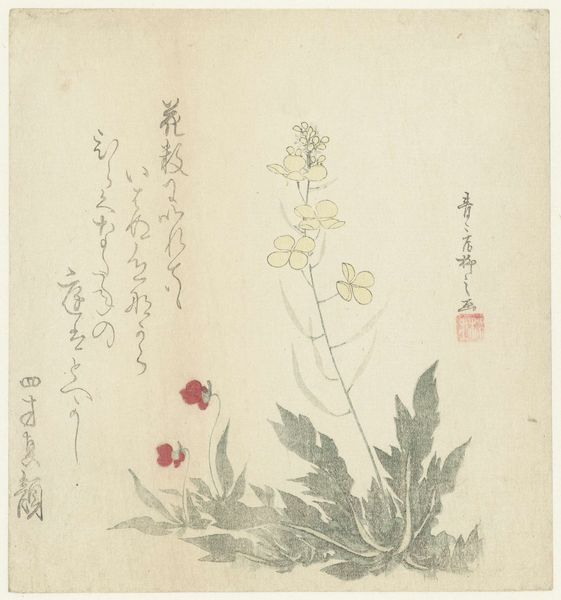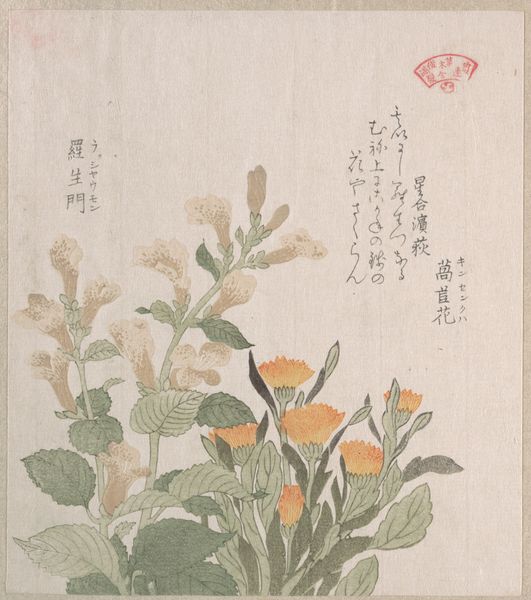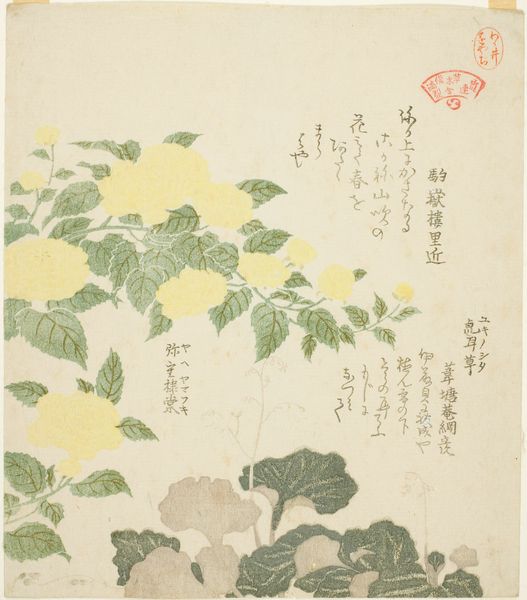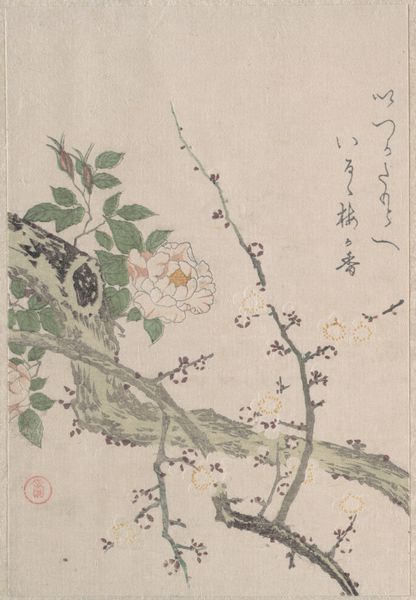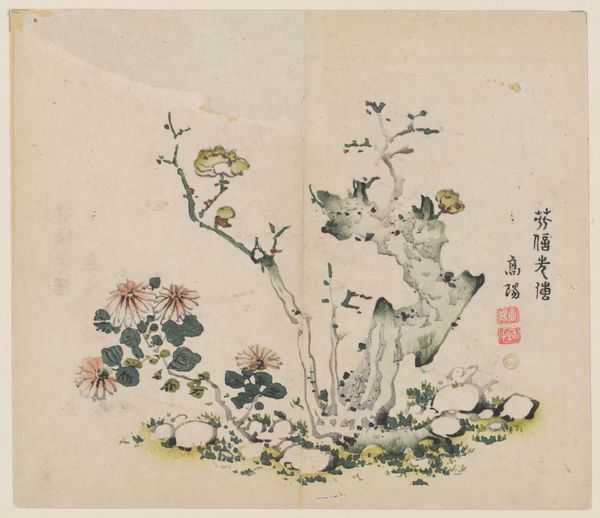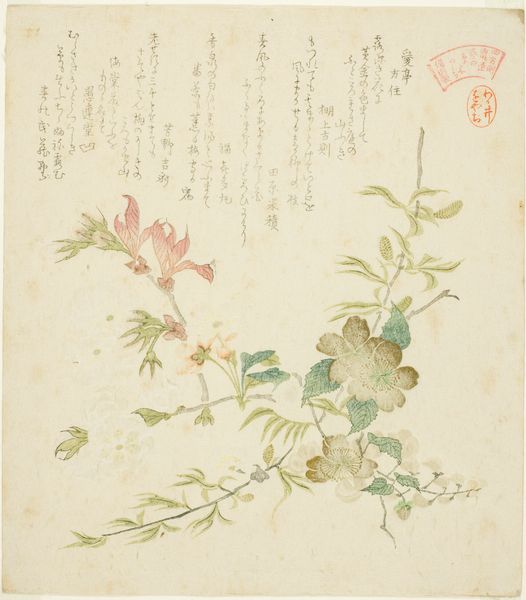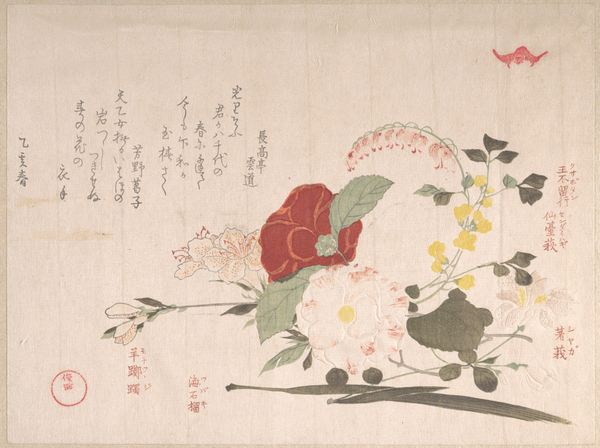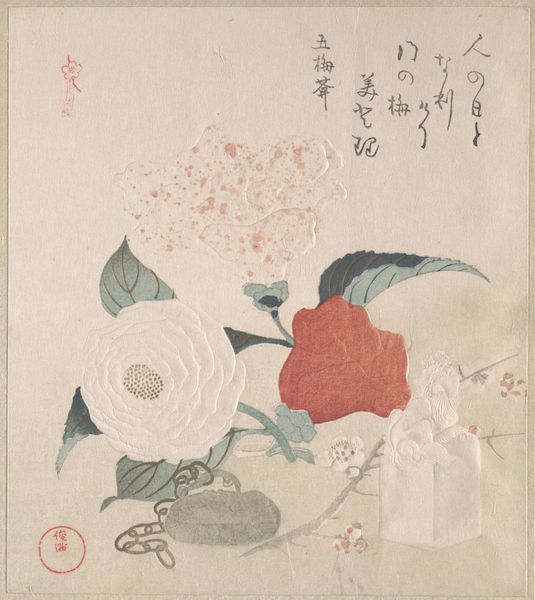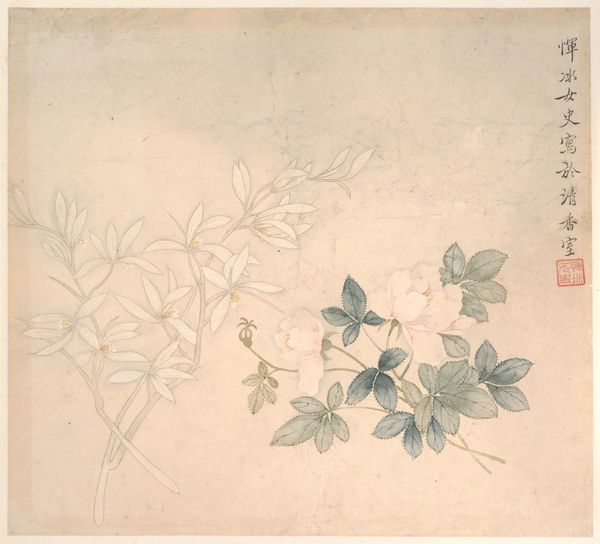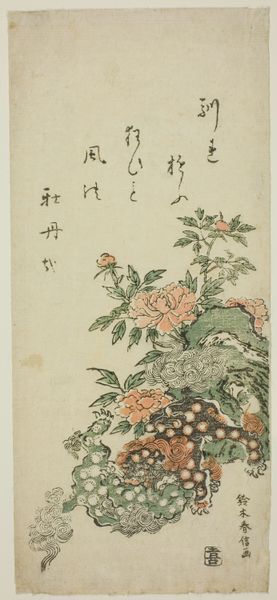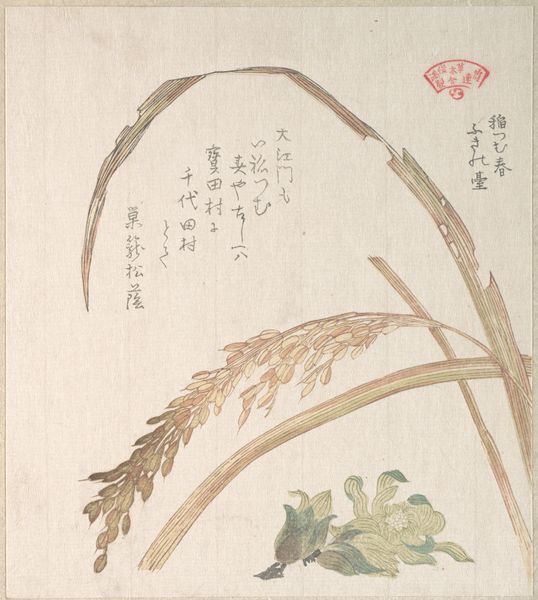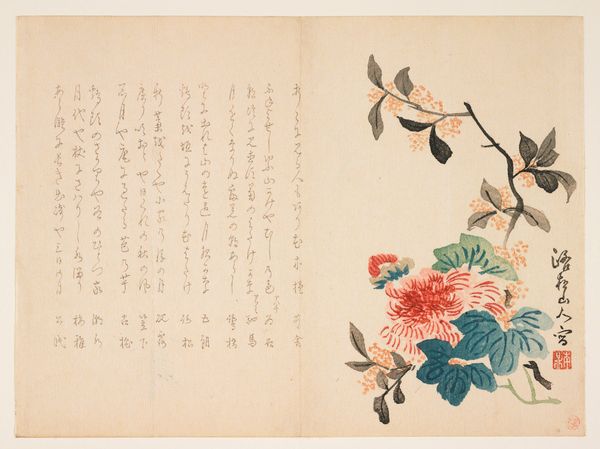
print, etching, paper, ink, woodblock-print
# print
#
etching
#
asian-art
#
etching
#
ukiyo-e
#
paper
#
ink
#
woodblock-print
#
orientalism
#
line
Dimensions: 8 5/16 x 5 1/2 in. (21.1 x 14 cm)
Copyright: Public Domain
Curator: We’re looking at "Yamabuki Flowers," or Kerria japonica, an anonymous woodblock print dating roughly from 1768 to 1868. It's currently part of the Metropolitan Museum of Art's collection. Editor: My initial response is quiet contemplation. The soft hues and delicate lines lend an almost ethereal quality. It seems very poised and restrained. Curator: Restraint is key to understanding ukiyo-e prints like this one. Note how the composition isolates the blossoming branch against a largely blank space, creating a sense of deliberate emptiness. It emphasizes form with a structured, minimalistic approach. Editor: And beyond just the aesthetic value, prints like this were a crucial part of disseminating botanical knowledge and capturing the natural world in a time before photography. The poems, the seals, the choice of Kerria japonica -- each element serves a distinct cultural purpose. Curator: Precisely. Semiotically, the negative space becomes just as important as the positive. The artist’s precise linear work creates not just shapes but symbolic breath and flow between them. Note the variations in line weight creating a shallow visual space and atmospheric perspective within that flatness. Editor: This image, so widely reproducible as a woodblock, would also have helped create and reinforce ideas of Japan within and outside the country. The very selection of the flowering plant as the main focus makes clear an attitude to nature, reflecting larger cultural values. Curator: A confluence of artistic and historical meanings bound together, inseparable, that still resonates within us hundreds of years later. Editor: I appreciate how viewing this work has underscored for me, the interwovenness of design, intention, and societal influences present within even simple appearing artworks.
Comments
No comments
Be the first to comment and join the conversation on the ultimate creative platform.
